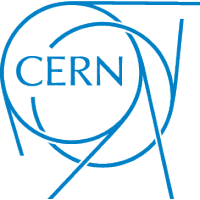CERN
CERN
CERN (European Organization for Nuclear Research) is a high energy physics research organization, based on the French–Swiss border in Geneva, Switzerland. Established in 1954, CERN has 21 member states and a user community of more than 10.000 people from 600 institutes and universities around the world.
Science and technology at CERN
The instruments used at CERN are purpose-built particle accelerators and detectors.
CERN hosts the world's largest and most complex scientific instruments to study the basic constituents of matter. The flagship accelerator is the Large Hadron Collider (LHC) with its four large experiments (ATLAS, CMS, ALICE and LHCb), which led to the discovery of the Higgs Boson in 2012.
CERN has a long legacy of successful developments of particle detectors, and in particular gas- based detectors. The Multi-Wire Proportional Chamber, for which Georges Charpak was awarded the Nobel Prize in 1992, and - more recently - the Gaseous Electron Multiplier (GEM) were invented and developed at CERN. CERN has major roles in the RD-51 collaboration, the largest community for the development of Micro-Pattern Gaseous Detectors (MPGDs), a family of detectors of which GEMs are a member.
CERN’s collaboration with ESS
CERN is part of the BrightnESS project within the Work Package 4 in the Task 4.1: The resolution challenge. The goal is the realisation of a neutron detector prototype for the Neutron Macromolecular Crystallography (NMX) instrument at ESS. The detector is based on MPGDs and solid neutron converters. The novelty of this approach is to combine time resolution and very high position resolution (of about 200um) in a single detector able to cope with extremely large local neutron fluxes.
Several aspects of the detector need dedicated development: In order to increase the detection efficiency gadolinium will be used as a neutron converter. The materials and the geometry of the detector must be optimised to minimise the effects of neutron scattering, and the electronics must be able to cope with high acquisition rates. Additionally, new analysis algorithms must be developed to achieve the best possible position resolution.
CERN is not an In-Kind or cash contributor to ESS, as CERN’s Associate and Member countries are involved in this contribution. ESS and CERN began to collaborate formally in 2008 and the technology behind CERN’s Superconducting Proton Linac (SPL) was a key resource and model for the ESS Accelerator project.
.jpg)
The CERN buildings amongst the surrounding countryside.


 is funded by the European Union Framework Programme for Research and Innovation Horizon 2020, under grant agreement 676548.
is funded by the European Union Framework Programme for Research and Innovation Horizon 2020, under grant agreement 676548.